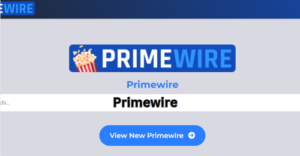Digper2 – The Next Evolution in Digital Performance

Introduction to Digper2
In today’s rapidly evolving digital landscape, businesses are continuously looking for ways to improve efficiency, optimize processes, and enhance user experiences. With the advent of advanced technologies such as artificial intelligence (AI), machine learning (ML), big data, and the Internet of Things (IoT), the digital transformation era has taken a significant leap forward. One such groundbreaking innovation that is at the forefront of this transformation is Digper2 (Digital Performance 2.0).
Digper2 represents the next step in digital performance, integrating cutting-edge technologies to streamline operations across industries. This concept not only revolutionizes how businesses function but also dramatically improves customer outcomes, helping organizations stay ahead of the competition.
In this comprehensive guide, we will delve deep into Digper2, exploring its core components, benefits, real-world applications, and future potential.
What is Digper2?
At its core, Digper2 (Digital Performance 2.0) is an advanced framework that enhances digital performance by integrating multiple next-gen technologies. It is the culmination of various technological advancements that allow businesses to harness the full potential of AI, ML, IoT, and big data.
Digper2 focuses on automating and optimizing workflows, improving decision-making through data-driven insights, and creating seamless user experiences. By implementing Digper2, companies can experience a significant boost in efficiency and productivity, leading to higher revenue and customer satisfaction.
Key Technologies Powering Digper2
- Artificial Intelligence (AI): AI is the backbone of Digper2. With its ability to mimic human intelligence, AI enhances decision-making processes by analyzing vast amounts of data in real-time.
- Machine Learning (ML): ML enables Digper2 to learn from historical data and make predictions, allowing businesses to anticipate market trends, customer preferences, and operational inefficiencies.
- Big Data Analytics: Digper2 leverages big data to provide actionable insights that drive informed business decisions. This allows companies to respond to market changes swiftly and adapt their strategies accordingly.
- Internet of Things (IoT): IoT integration within Digper2 enables real-time monitoring and control of devices, facilitating automation and improving operational efficiency.
Benefits of Digper2 for Businesses
The implementation of Digper2 offers numerous benefits that can transform businesses across various sectors. Some of the most significant advantages include:
1. Enhanced Operational Efficiency
By automating repetitive tasks, Digper2 reduces human intervention, thereby minimizing errors and accelerating workflows. This leads to smoother operations and faster project completion times.
2. Improved Decision-Making
With AI and big data analytics at its core, Digper2 provides organizations with real-time data and predictive insights. This enables better decision-making and allows businesses to stay agile in a fast-paced environment.
3. Personalized Customer Experiences
Digper2 uses machine learning to analyze customer behavior and preferences. This allows businesses to deliver highly personalized experiences, increasing customer satisfaction and loyalty.
4. Cost Reduction
Through automation and optimized resource management, Digper2 helps companies cut down operational costs. For example, IoT-driven automation can lead to significant energy savings in manufacturing processes.
5. Scalability
As businesses grow, so do their data and operational needs. Digper2 is designed to scale effortlessly, allowing organizations to handle larger workloads without compromising efficiency or performance.
6. Predictive Analytics for Market Trends
With the power of ML and big data, Digper2 provides organizations with predictive analytics, helping them anticipate future market trends and consumer demands. This allows for proactive adjustments to strategies and operations.
Industries Leveraging Digper2
Digper2 has the potential to revolutionize multiple industries by offering tailor-made solutions to specific sector challenges. Here’s how it is transforming different industries:
1. Manufacturing
In the manufacturing sector, Digper2 integrates IoT devices for real-time monitoring of machinery and production lines. This allows manufacturers to predict maintenance needs, reduce downtime, and optimize the supply chain.
2. Healthcare
The healthcare industry benefits from Digper2 by improving patient care through AI-driven diagnostics and personalized treatment plans. IoT devices can monitor patient health in real-time, allowing for timely interventions and enhanced outcomes.
3. Retail
Retailers use Digper2 to gain insights into customer buying patterns, enabling them to offer personalized product recommendations and optimize inventory management. This results in increased customer satisfaction and profitability.
4. Finance
In the financial sector, Digper2 automates processes like fraud detection, risk management, and customer support. By utilizing AI and big data, financial institutions can provide more accurate financial services and faster transactions.
5. Transportation and Logistics
Digper2 is transforming transportation by optimizing routes, reducing fuel consumption, and enabling predictive maintenance of vehicles through IoT sensors. This leads to significant cost savings and a more efficient supply chain.
How to Implement Digper2 in Your Business
Implementing Digper2 requires a strategic approach, ensuring that your organization is ready for the transition. Below are the key steps to successfully integrate Digper2 into your business processes:
1. Assess Your Current Digital Infrastructure
Before adopting Digper2, evaluate your existing digital infrastructure. Identify areas where automation, AI, or big data can make the most impact.
2. Set Clear Objectives
Outline the specific goals you want to achieve with Digper2. Whether it’s improving customer experiences, optimizing operations, or reducing costs, having clear objectives will help guide the implementation process.
3. Choose the Right Technologies
Depending on your industry and business needs, select the technologies that will drive the most value. For instance, if predictive analytics is a priority, prioritize big data and ML capabilities within Digper2.
4. Train Your Workforce
Ensure that your team is trained to use the new digital tools that come with Digper2. This will help them adapt to the new workflows and maximize the benefits of the technology.
5. Monitor and Optimize
Once Digper2 is implemented, continuously monitor its performance. Use analytics to identify areas of improvement and optimize the system for better results.
Challenges of Digper2 Adoption
While Digper2 offers immense potential, there are certain challenges that businesses may face during its adoption:
1. Initial Investment
Implementing advanced technologies such as AI, ML, and IoT requires a significant upfront investment. However, the long-term benefits of increased efficiency and reduced operational costs outweigh the initial expenditure.
2. Data Privacy and Security
As businesses collect vast amounts of data, ensuring the privacy and security of this data becomes crucial. Companies need to adopt strong cybersecurity measures to protect sensitive information from breaches.
3. Integration with Legacy Systems
Many businesses still rely on legacy systems that may not be compatible with Digper2 technologies. To ensure smooth integration, organizations may need to invest in system upgrades or adopt middleware solutions.
4. Workforce Resistance to Change
The transition to Digper2 may face resistance from employees who are accustomed to traditional workflows. It is essential to provide adequate training and highlight the benefits of the new system to ensure a smooth transition.
The Future of Digper2
The future of Digper2 looks promising, with more industries expected to adopt its advanced technologies to stay competitive in the digital age. As AI, ML, and IoT continue to evolve, Digper2 will likely become even more sophisticated, offering deeper insights and more advanced automation.
We can expect to see new applications of Digper2 in fields such as autonomous vehicles, smart cities, and personalized healthcare, further revolutionizing industries and improving the quality of life for individuals worldwide.
Conclusion:
Digper2 is more than just a digital transformation framework—it is the future of business optimization. By integrating advanced technologies like AI, ML, IoT, and big data, Digper2 can revolutionize industries, enhance operational efficiency, and create unparalleled customer experiences.
For businesses looking to stay ahead in a competitive market, adopting Digper2 is not just an option, but a necessity.
FAQs
1. What is Digper2?
Digper2, or Digital Performance 2.0, is an advanced digital framework that leverages technologies such as AI, ML, big data, and IoT to optimize business processes and enhance performance.
2. How does Digper2 improve operational efficiency?
Digper2 automates repetitive tasks, integrates real-time monitoring, and provides predictive insights that streamline workflows, reduce errors, and enhance overall productivity.
3. Which industries can benefit from Digper2?
Digper2 can be applied across various industries, including manufacturing, healthcare, retail, finance, and logistics, offering tailored solutions for each sector’s unique challenges.
4. What are the core technologies behind Digper2?
The key technologies powering Digper2 include artificial intelligence (AI), machine learning (ML), big data analytics, and the Internet of Things (IoT).
5. Is Digper2 scalable for growing businesses?
Yes, Digper2 is designed to be scalable, allowing businesses to handle increasing workloads and expanding operations without compromising performance.
6. What are the challenges of adopting Digper2?
Common challenges include the initial investment required, data privacy concerns, integration with legacy systems, and workforce resistance to change.
7. How does Digper2 enhance customer experiences?
By leveraging machine learning to analyze customer behavior, Digper2 allows businesses to deliver highly personalized experiences, improving customer satisfaction and loyalty.
8. What role does IoT play in Digper2?
IoT enables real-time monitoring and automation within Digper2, allowing businesses to track and optimize physical processes remotely, improving operational efficiency.
9. How does Digper2 assist in decision-making?
Digper2 uses AI and big data analytics to provide real-time insights and predictive analytics, enabling informed and data-driven decision-making.
10. What is the future potential of Digper2?
The future of Digper2 includes more sophisticated AI, ML, and IoT applications, with potential use cases in autonomous vehicles, smart cities, and personalized healthcare.





